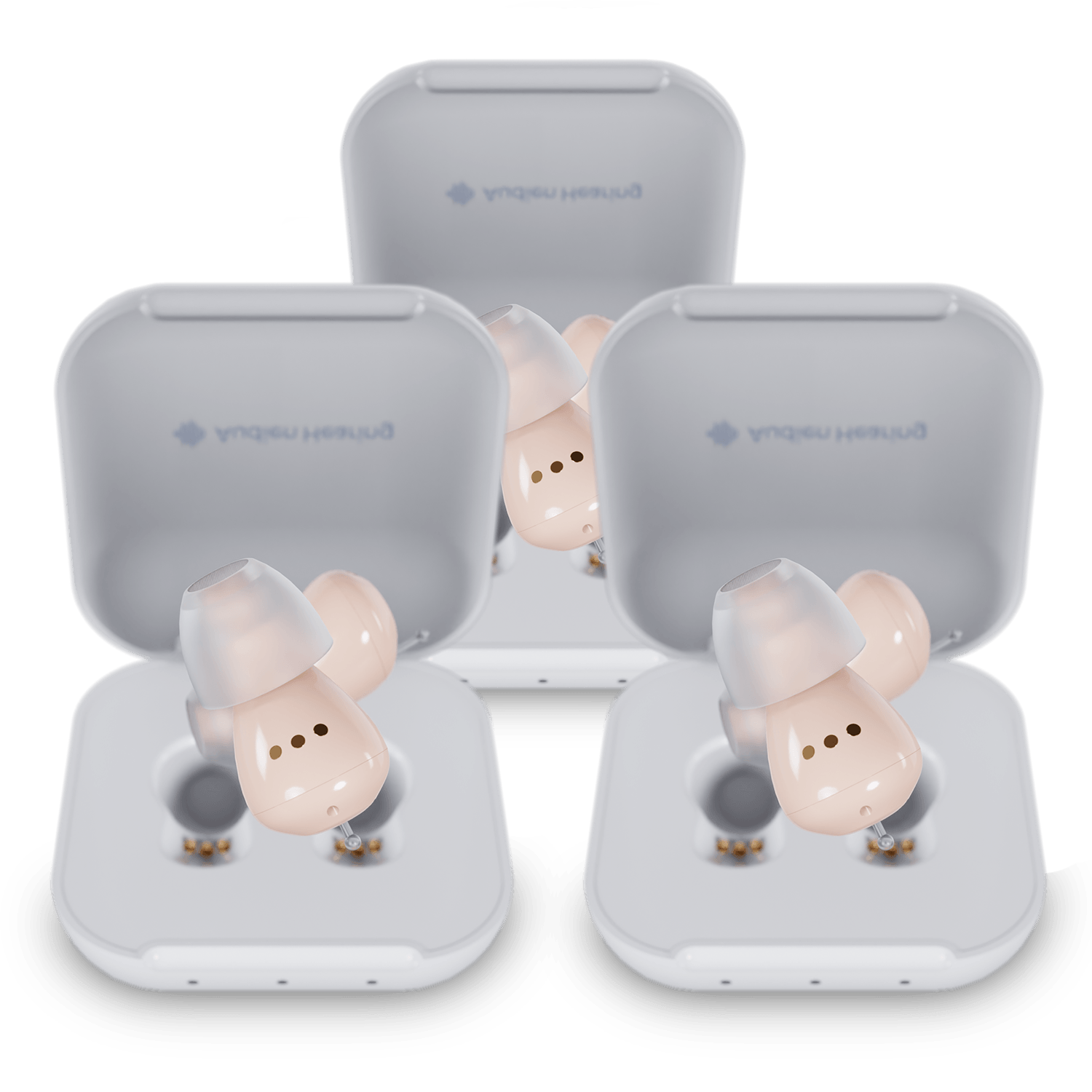
Hidden hearing loss is a broad term that indicates a person who is suffering from hearing loss that a normal auditory test cannot diagnose. Individuals who have hidden hearing loss may pop up on a case-by-case basis.
Today, there isn’t technology that can diagnose or find hidden hearing loss that exists. These individuals may feel frustrated because of potentially having a hearing impairment. Even after seeing a specialist and then being told that the test results show they have normal hearing can be rather confusing.
Let's take a closer look at not only what hidden hearing loss is but what to do if you suspect you suffer from this rare condition.
Understanding the Ear
When trying to understand hidden hearing loss, it is good to review how your ears function.

Our ears are composed of three parts; the outer ear, the middle, and the inner ear. The three parts of the ear process sound waves we interact with daily and deliver them to our sensory neurons, where the brain interprets the waves.
Outer Ear
The outer ear is composed of the pinna or auricle. This is the visible part of the ear most recognizable as the structure of the human ear. This unique feature acts as protection for the ear canal.
Middle Ear
Moving deeper into the ear, we find the tympanic membrane, more commonly called the eardrum. This structure separates the outer and middle ear. The tympanic cavity is an important structure in the middle ear containing three small bones: The mallus, incus, and stapes.
These three bones in the tympanic cavity are extremely important as they are tuned to interact with sound waves passing through your eardrum. They act as transferring equipment, taking frequencies, and sending them to the inner ear before interacting with the sensorineural aspect of our hearing process.
Inner Ear
In the inner ear, two very important processes occur. Not only does the inner ear interact with our sense of hearing and sound processing, but it also plays a very important role in our ability to balance sound.
The cochlea is a structure in the inner ear associated with the nerves involved with hearing. When sound passes through the outer ear, it impacts the tympanic membrane (the eardrum) before the sound transfers to the middle ear.
These vibrations interact with the tympanic cavity, specifically activating the mallus, incus, and stapes. The stapes transfer those vibrations to the inner ear, where the cochlea converts them to electrical impulses.
Types of Hearing Loss
Hearing loss as we know it is a defect in the anatomy and process of hearing described above. A person begins to experience hearing loss or impairment due to three types of hearing loss: conductive, sensorineural, or mixed.
Conductive Hearing Loss
Individuals experiencing conductive hearing loss have some impairment to conduct sound waves through the natural hearing pathway. Conductive hearing loss has multiple causes, from a build-up in ear wax to a traumatic injury lodging an object in your outer ear. Other causes are side effects of infection creating a blockage.
While conductive hearing loss leads to complications that cause severe loss, it is often correctable and presents a moderate challenge to your hearing.
Sensorineural Hearing Loss
Sensorineural hearing loss deals specifically with the inner ear. This hearing loss may be acquired or congenital. It affects structures like the cochlea, which impedes your nervous system from receiving the proper input to interpret sound waves adequately.
Sensorineural hearing loss is often associated with moderately severe to severe hearing loss, but may be mild and progressive.
Hidden Hearing Loss
Hearing loss is widely experienced in the general population due to its many causes. Not only is everyone susceptible to developing hearing loss, but also hidden hearing loss. Whether you naturally acquire it in old age from normal stimuli that wear on your hearing organs over time, or you are chronically exposed to loud noises without proper hearing protection - hearing loss can occur.
Your primary care provider will send you to an Ear, Nose and Throat specialist first who determines if your hearing loss may be correctable or due to a medical condition that needs to be treated. Next, you will see an audiologist, an auditory specialist known as an audiologist, will administer various tests.These tests assess your hearing loss, brevity, and the type of hearing loss you are experiencing. Although, these tests cannot diagnose someone who is experiencing hidden hearing loss.
How Do You Know If You Have It?

The disappointing answer is that we still, as of yet, there is not a test that can measure hidden hearing loss. There is strong speculation these issues come from a neurological origin within the brain.
Doctors base this decision on the understanding that a battery of hearing tests coming back as positive indicates the issue is deeper than the actual hearing organ.
If your hearing pathways are intact and functional, this issue could lie outside of these direct pathways. However, research is actively being done to understand further how it’s outside of your hearing pathways and how to treat hidden hearing loss.
Symptoms of Hidden Hearing Loss
Hidden hearing loss symptoms can vary. However, people who suffer from this condition can have hearing loss phenomena in settings with loud noises.
For instance, if a person has no trouble talking to a single person in a crowded room but cannot hear a single word being spoken by the other person — this may be a sign of hidden hearing loss. It is thought that qualities like sound pollution may trigger this condition and that overstimulation of washed-out background noise causes a person to lose the ability to hear specific things.
Your ENT doctor may refer to this problem known as difficulty in speech processing. Your audiologist can measure the extent of this problem by performing a speech discrimination test whereby words are presented to gauge your degree of understanding.
How To Manage
What are you supposed to do if you have a condition that cannot be diagnosed and your symptoms do not have a stable presentation?
Advocate For Yourself
The first thing we suggest is to advocate for your condition. It can be very discouraging to pay for expensive hearing treatments and doctor’s appointments only to be told that your hearing is normal.
If you know that you are experiencing unexplainable hearing loss, keep advocating for treatment and consultation.
Make a Game Plan
Secondly, we suggest that you take time to understand how this is specifically affecting you and then make a plan of action. If you find out that certain environments are difficult to hear in, you can then develop strategies to help you avoid those specific triggers.
If you notice that places with large amounts of sound trigger an episode of unexplainable loss of hearing, you should avoid high sound pollution environments.
Build a Community That Fosters Safety
For those who have hidden hearing loss, the reality of a lack of specific diagnosis or treatments can be old news. If possible, take time to educate those around you to help support you. Reach out to your HR department at your place of work and make sure they are educated as well to help you navigate any challenges this condition may have on your work life.
Your ENT doctor and audiologist can make suggestions to improve your understanding of speech and being able to recognize different sounds. There are techniques such as learning how to pay attention to non-verbal cues which can provide enormous benefits.
Audien hearing offers high-quality hearing aids that can help improve your hearing. If you want to learn more about hearing loss, we have a wide array of resources available.
“Hearing and balance are arguably our most complex and intricate senses because there are many other factors involved beyond the structures of our ears.” - Drew Sutton, MD, Board-Certified Otolaryngologist.
Source:
Anatomy and Physiology of the Ear - Health Encyclopedia |University of Rochester Medical Center
What is hidden hearing loss? | Ohio State Medical Center
Why You May Have Sudden Hearing Loss In Noisy Settings | aarp.org













